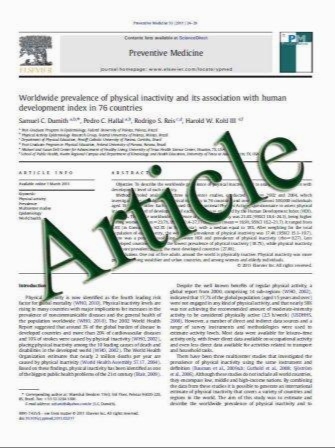Fracture prediction and calibration of a Canadian FRAX® tool: a population-based report from CaMos
- نوع فایل : کتاب
- زبان : انگلیسی
- مؤلف : L.-A. Fraser & L. Langsetmo & C. Berger & G. Ioannidis & D. Goltzman & J. D. Adachi & A. Papaioannou & R. Josse & C. S. Kovacs &W. P. Olszynski & T.
- چاپ و سال / کشور: 2010
Description
Summary A new Canadian WHO fracture risk assessment (FRAX®) tool to predict 10-year fracture probability was compared with observed 10-year fracture outcomes in a large Canadian population-based study (CaMos). The Canadian FRAX tool showed good calibration and discrimination for both hip and major osteoporotic fractures. Introduction The purpose of this study was to validate a new Canadian WHO fracture risk assessment (FRAX®) tool in a prospective, population-based cohort, the Canadian Multicentre Osteoporosis Study (CaMos). Methods A FRAX tool calibrated to the Canadian population was developed by the WHO Collaborating Centre for Metabolic Bone Diseases using national hip fracture and mortality data. Ten-year FRAX probabilities with and without bone mineral density (BMD) were derived for CaMos women (N=4,778) and men (N=1,919) and compared with observed fracture outcomes to 10 years (Kaplan–Meier method). Cox proportional hazard models were used to investigate the contribution of individual FRAX variables. Results Mean overall 10-year FRAX probability with BMD for major osteoporotic fractures was not significantly different from the observed value in men [predicted 5.4% vs. observed 6.4% (95%CI 5.2–7.5%)] and only slightly lower in women [predicted 10.8% vs. observed 12.0% (95%CI 11.0–12.9%)]. FRAX was well calibrated for hip fracture assessment in women [predicted 2.7% vs. observed 2.7% (95%CI 2.2–3.2%)] but underestimated risk in men [predicted 1.3% vs. observed 2.4% (95%CI 1.7–3.1%)]. FRAX with BMD showed better fracture discrimination than FRAX without BMD or BMD alone. Age, body mass index, prior fragility fracture and femoral neck BMD were significant independent predictors of major osteoporotic fractures; sex, age, prior fragility fracture and femoral neck BMD were significant independent predictors of hip fractures. Conclusion The Canadian FRAX tool provides predictions consistent with observed fracture rates in Canadian women and men, thereby providing a valuable tool for Canadian clinicians assessing patients at risk of fracture.
Osteoporos Int (2011) 22:829–837 DOI 10.1007/s00198-010-1465-1 Received: 9 June 2010 / Accepted: 3 September 2010 / Published online: 16 December 2010


